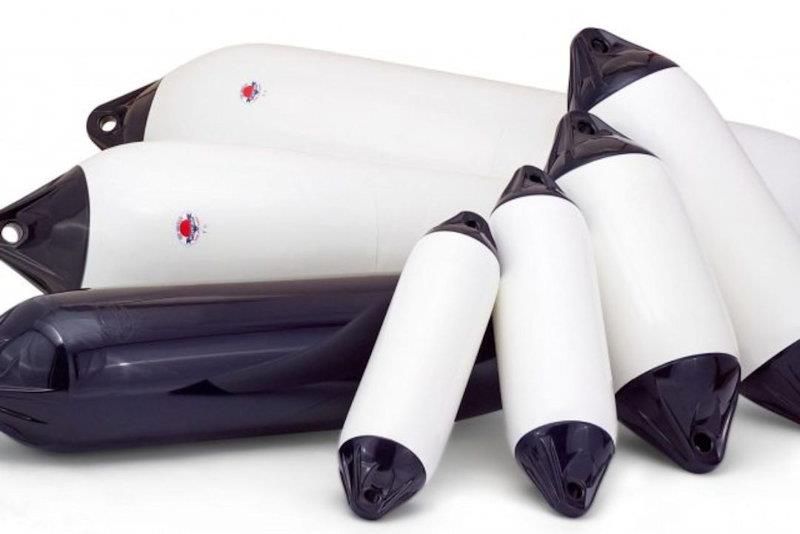
Polyform AS and Polyform US fenders - exporting quality and performance from Norway to the U.S
by Anna Zyk 18 Oct 2023 16:00 UTC

Comparing Polyform AS and Polyform US fenders © Polyform AS (Norway)
One of latest additions to the upffront.com sailing hardware line-up are the Polyform fenders from the original Norwegian manufacturer - Polyform AS. Established over 60 years ago, Polyform AS is renowned for inventing the modern plastic buoy and producing fenders of exceptional quality.
In this article, we will look into the key features of Polyform fenders, share the story of Polyform Norway versus Polyform US, and provide a technical comparison of some of their popular A and F-series fenders.
Best of Polyform Fenders from Norway
Polyform AS' unique, in-house developed, and patented POLYMATIQ® technology ensures supreme control over the fusion process, resulting in one of the most consistent quality available. Here are some key features of Polyform fenders:
- Robust Construction: The easily recognizable rib-reinforced rope holds are solid and are created using high-pressure injection molding.
- Extreme Durability: Polyform fenders are rigorously tested for strength and flexibility in extreme temperatures ranging from -30 degreesC to +50 degreesC.
- Polyform fenders feature high abrasive resistance and high energy absorption, making them suitable for ships of up to 1500 tons deadweight.
- Low Maintenance: Polyform fenders require no special maintenance as long as they are not over-inflated, retaining their shape and functionality year after year.
- Versatile Sizing: Polyform's F-series cylindrical fenders come in a wide range of sizes suitable for vessels ranging from small dinghies to commercial ships and Navy vessels.
The Story of Polyform Norway versus Polyform US
The Polyform story originated in the picturesque coastal town of Ålesund, Norway, in 1955 when its founders invented the world's first plastic buoy. This invention became the cornerstone of the business. In the 1970s, Polyform US was established in the Pacific Northwest and continues to thrive as a family-owned business, designing and producing all products in Kent, Washington. We proudly offer both Polyform AS (Norway) and Polyform US products on our website, maintaining a brand-neutral approach.
Polyform Fenders - Technical Comparison
To help you make an informed choice, here is a technical comparison of the most popular fenders from both Polyform US and Polyform Norway:
A-Series:
| Model | Length (mm) | Diameter (mm) | Weight (kg) |
|---|
| A1 | 381 | 380 | 279 | 295 | 1.18 | 1.15 |
| A3 | 584 | 575 | 432 | 460 | 38 | 3.1 |
| A5 | 914 | 940 | 686 | 710 | 8.98 | 8.3 |
F-Series:
| Model | Length (mm) | Diameter (mm) | Weight (kg) |
|---|
| F2 | 635 | 610 | 208 | 220 | 1.81 | 1.75 |
| F4 | 1029 | 1040 | 216 | 220 | 2.4 | 2.9 |
| F6 | 1067 | 1090 | 279 | 290 | 4.63 | 4.2 |
Polyform fenders sizing
Not sure which size of fenders do you need for your boat? In fender sizing a simple rule of thumb applies - approximately 1 inch/25 mm of fender diameter for every 4 or 5 ft/1,2-1,5 m of the boat length (LOA) for cylindrical fenders. For round fenders approx. 2 inch/50 mm for every 5 ft/1,5 m of boat length.
Polyform US recommends F2 fender for boats ranging from 20 to 30 feet. Polyform AS' recommendation corresponds to boats of approximately 26 to 30 feet (6-8 m) in length. F4 fender is recommended for boats from 30 to 35 ft by Polyform US, while Polyform AS suggests it for slightly bigger boats of approximately 32 to 39 ft (10-12 m). As we go into bigger fender sizes Polyform US suggests F6 fender for boats of 35 to 50 feet. For Polyform AS range this fender is recommended for boats between approximately 50-52 ft (16m).
There are no consistent differences between the two brands. Each size may vary in length, width, thickness, and weight, with Polyform US offering a broader range, especially at the smaller sizes extending into HTM & NF series. These distinctions likely stem from subtle optimisations in their product lines.
If you are not sure how many polyform fenders do you need for your boat, please refer to our previous article on this topic to help you make the right choice!
Summary on Polyform fenders
In conclusion, both Polyform Norway and Polyform US offer robust products made from quality materials that can withstand extended exposure to the elements. With over 60 years of setting standards for buoy design and quality, Polyform remains a top choice for sailors worldwide. We encourage you to explore the technical details provided above to select the perfect fender for your sailing needs, whether you opt for Polyform (AS) or Polyform US.
If you have any questions about Polyform fenders or need help choosing one of the products on our website, please feel free to email us at to talk to one of our experts. Follow the link below to find all the Polyform fenders available in our shop:
